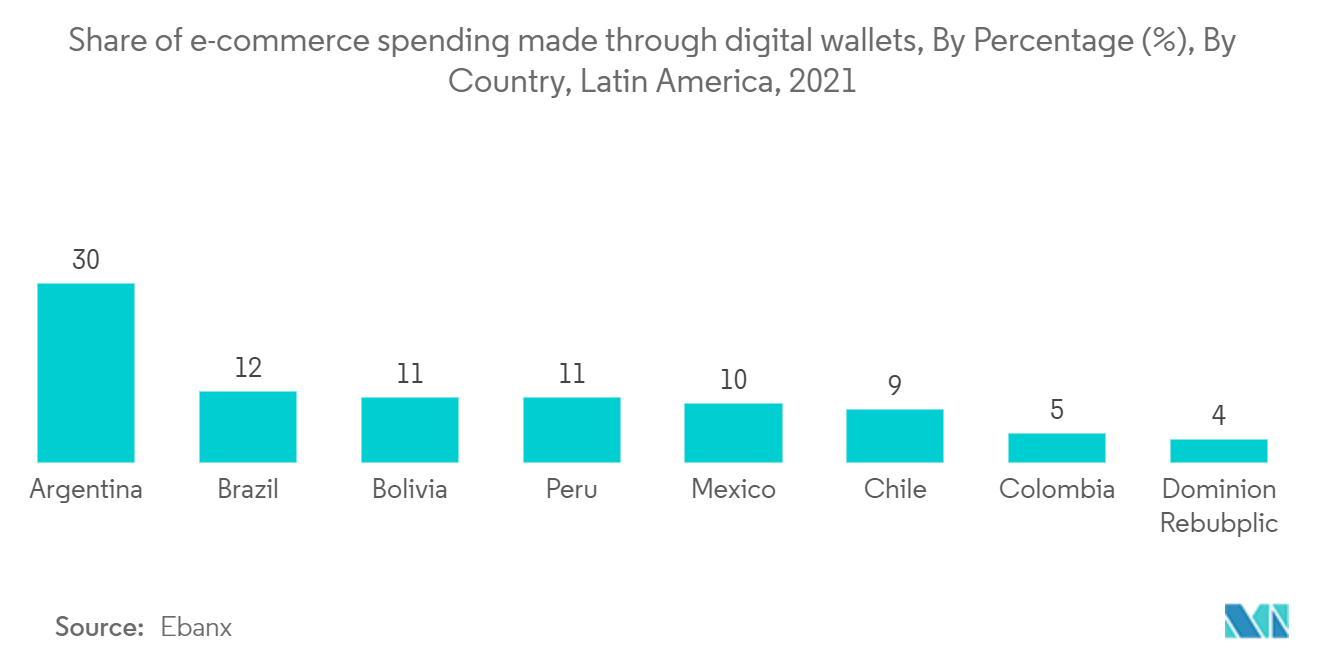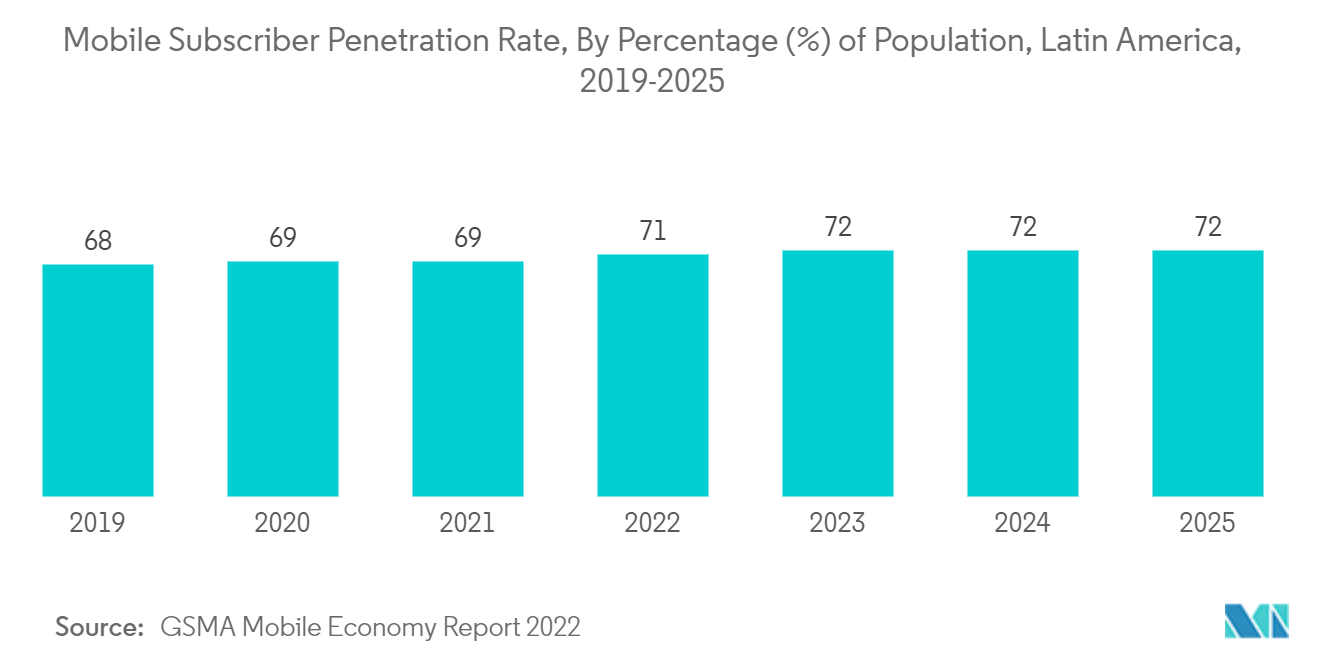Market Trends of Latin America Mobile Payments Industry
This section covers the major market trends shaping the Latin America Mobile Payments Market according to our research experts:
NFC (Near-field communication) will Hold Major Market Share
- (NFC)Near-field communication has become a common term in Latin American payments. NFC is a method of wireless data transfer that allows laptops, smartphones, tablets, and other devices to share data when nearby. NFC technology powers contactless payments via mobile wallets like Google Pay and Apple Pay, as well as contactless cards.
- NFC mobile payment technology is stable, safe, and secure. As EMV chip cards, mobile wallets are more secure than magnetic strip cards. Making the device useless for thieves as they need a passcode or biometric authentication to process the transaction in an NFC-enabled device has contributed to the rapid adoption of mobile payments.
- With the rise of the E-commerce industry in the region, the future is contactless payments. The smartphone makes e-commerce transactions easier and more convenient. Most retailers in the area are switching to adopting cashless transactions as the primary mode of payment.
- With the increased rate of adaptation among mobile phone makers towards NFC technology, NFC payments are reaching the state of n 'honor-all-wallets' scenario. Businesses With the rush toward accepting mobile payments, there have been rumblings from the card networks about an 'honor-all-wallet' policy.
- As per the data published by FIS, More than 67 million contactless POS terminals were shipped in 2020, and NFC payment terminals will grow from 80 million in 2020 to a projected 127 million by 2025. NFC readers and terminals are usually priced right for small business merchants. Costs range from as little as USD 49 for a simple NFC reader to USD 149 or more for a terminal that reads the chip and magnetic stripe cards.

Increasing Smartphone User is aiding the growth of the market
- The mobile industry plays a key role in Latin America in response to the Covid-19 pandemic. Mobile networks have enabled economic and social activities to continue. People have relied on the internet to stay connected to family and friends, access educational, financial, and health services, and work remotely.
- As per the report by GSMA, smartphone connections in Latin America reached 500 million at the end of 2021, with an adoption rate of 74%. In addition, the next four years will see almost 100 million additional smartphone connections in the region, taking the adoption rate up to 80%. This will spur mobile internet adoption, enabling more people to access digital services and access to mobile banking for the first time.
- With the introduction of 5G technology, the connectivity and advancement in the technology will propel the mobile payment market in the region; however, 4G will remain the foundation of the mobile industry in Latin America over the near term, accounting for almost 70% of total connections at the end of 2025. But most businesses will try to take advantage of 5 G-enabled devices as increased speed of data transfer and connectivity will attract more users to rely on smartphones for mobile payment transactions.
- As per the GSMA report on Mobile Economy, by 2025, the economic contribution of the Latin American mobile ecosystem will grow by more than USD 30 billion as countries in the region increasingly benefit from the improvements in efficiency and productivity brought about by the increased take-up of mobile services.

